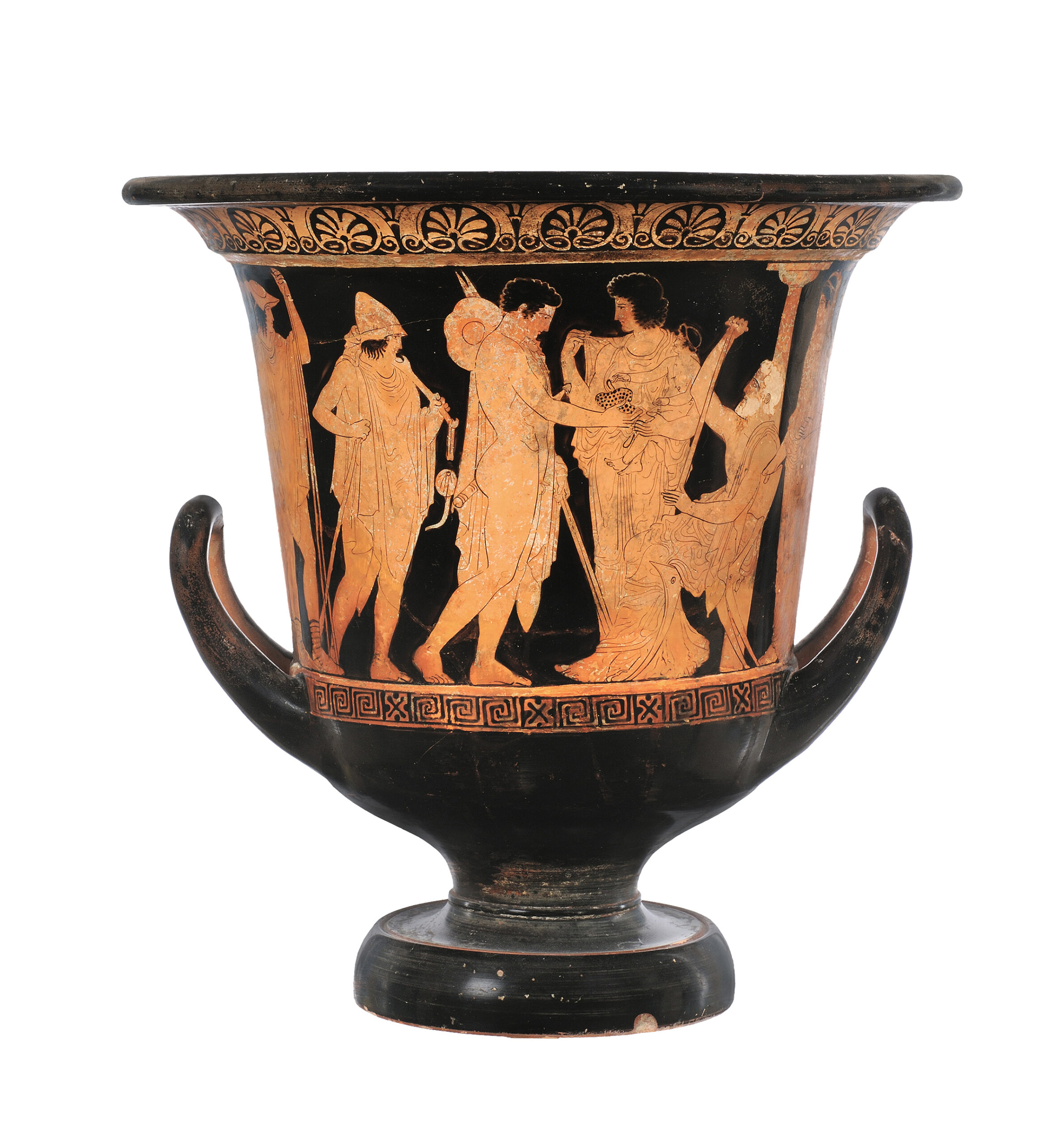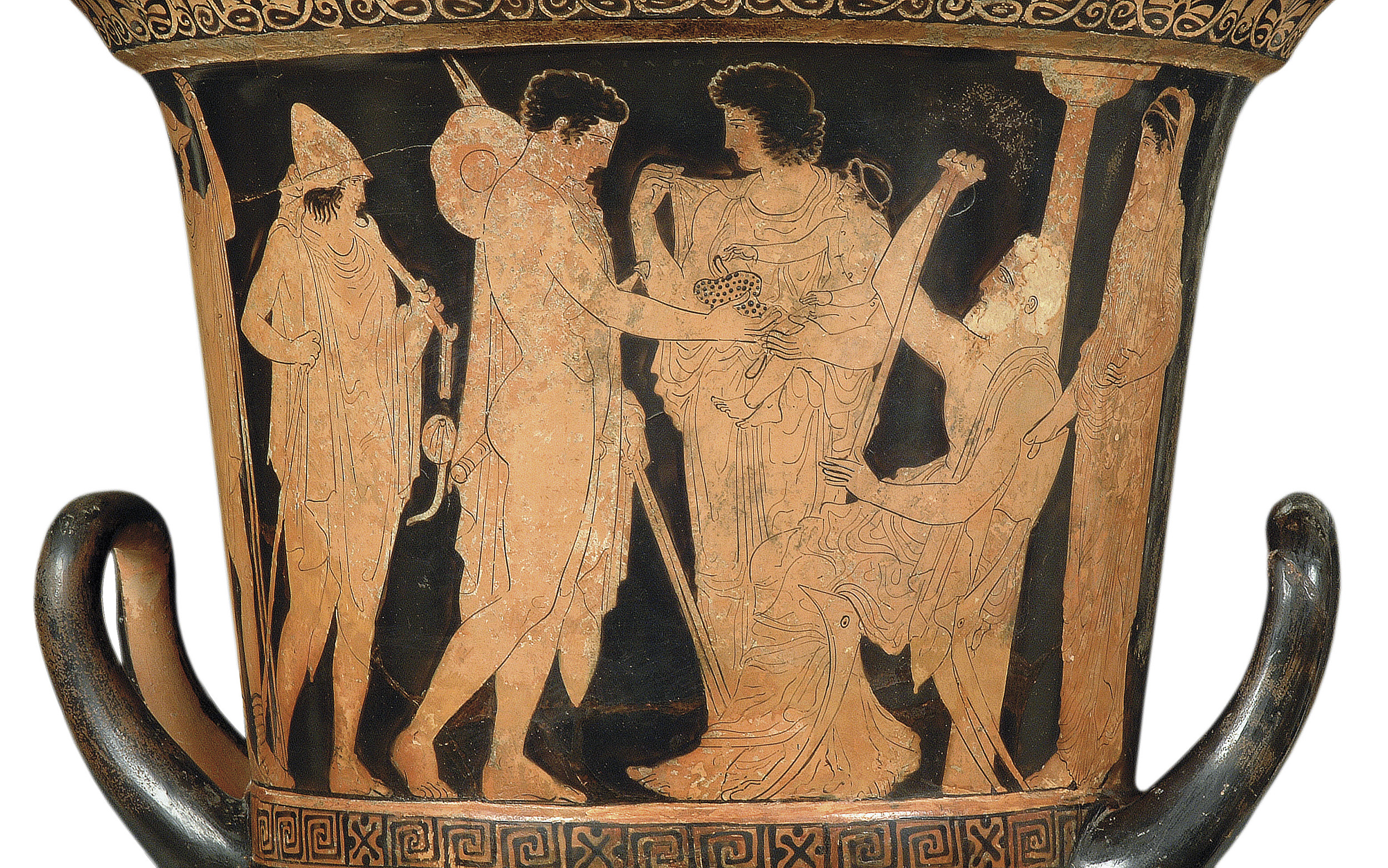



The main side of this vase depicts the departure of Meleager for the Calydonian boar hunt. Meleager was called upon to relieve the land of Aitolia (western Greece) of a frightful boar, which had been sent by goddess Artemis to revenge Oeneus (Melager’s father) for having omitted to offer her sacrifices. The boar caused extensive disaster in the region, and killed farmers who dared to sow their fields. Meleager summoned a group of heroes, who eventually managed to kill the dreadful boar. Here we see his departure for the dangerous hunt. Meleager bids farewell to his wife Alcyone, their son Parthenopares (to whom he gives a bunch of grapes) and his parents Oeneus and Althaea. He is followed by two male figures, probably companions in his dangerous mission.
In ancient art, the myth of the Calydonian boar-hunt is usually represented by hunting scenes. Meleager’s departure is rarely depicted. The krater of the Canellopoulos Museum resembles Athenian vases of the late 5th c. BC, which depict the departure of young warriors. By that time the Peloponnesian War was under way, and warriors departed from Athens on a daily basis – some not to return again. The Canellopoulos Museum krater seems to have linked the myth with the harsh reality of the period.
The vase is not signed but has been attributed to the so-called ‘Dinos painter’. This is a conventional name, deriving from the fact that the most famous work of this particular painter is to be found on a vase type known as dinos.
PUBLICATION
Zarkadas Α. 2006. Cat. no. 86, in Choremi-Spetsieri Α. – Zarkadas Α. (eds), The Paul and Alexandra Canellopoulos Museum. AncientArt, Athens,, 136-139.